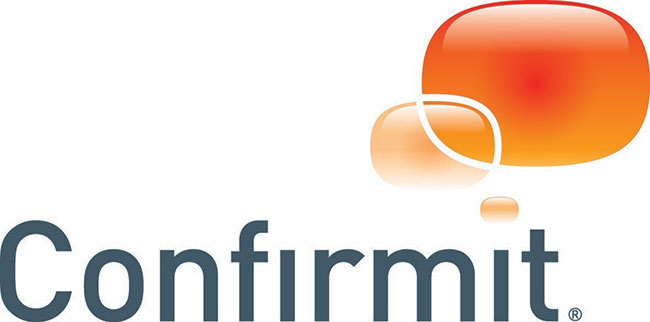SPONSORED CONTENT
 By Alexander Skorka, SVP Product Strategy, Confirmit
By Alexander Skorka, SVP Product Strategy, Confirmit
It’s been a long time since a lack of data was a problem for decision makers. Over the past 20 years, it has become easier and easier to capture the views of people and markets live, through almost any channel, directly or indirectly. Couple that with the myriad sources of additional information that add context to feedback and surveys and there is plenty to work with.
 This data lake has become a flood and the challenge now is how to navigate it, identify what is useful and, most importantly, effectively share that with an audience who can use it to derive value.
This data lake has become a flood and the challenge now is how to navigate it, identify what is useful and, most importantly, effectively share that with an audience who can use it to derive value.
Market research agencies who can harness this flood and help their clients to succeed have a huge opportunity to expand their offerings, add new revenue streams and carve out a niche in a crowded market. But how can you do it in an effective, productive and profitable way?
Why is sharing insight a challenge?
Simply put, we are all different and our brains process and react to information in different ways. Many of us who consider ourselves MR professionals have naturally analytical brains and for us, a crosstab or some conjoint analysis is a beautiful thing. But these tools are not always – or indeed often – useful for our audiences.
We have established that a lack of data isn’t the issue. In some cases, response rates are even going up. The challenge is that huge data lake and the format of the information within it. For many, the task of integrating it and delivering it effectively is the biggest hurdle.
Let’s take a step back. What do clients need?
Ultimately, businesses need insights to drive decision-making. In a world where everything is prefaced with the phrase “data-driven,” no one wants to be seen to be winging it. As researchers, then, our job is to support our clients in that goal. We need to make it easier for people – not just data geeks – to understand the information at their fingertips.
The good news here is that while data collection becomes increasingly commoditized through DIY survey tools, there is huge opportunity for MR agencies to deliver value in the way they communicate that data.
It is increasingly evident that relevant data must be available to all stakeholders in a company – not just the C-suite and senior management. Properly presented data empowers smart decisions faster across an entire company. This is particularly true in times of remote work.
Democratizing data
The democratization of data means that everyone in the company who must make fact-based decisions – from the C-suite to the front line – has direct access to data. However, there is a small problem here: Not everyone has the skills and experience to independently analyze and interpret the data relevant to them. Of course, in the future employees should be trained in data literacy more than before. They should have tools available that enable them to use data independently, such as self-service data discovery tools. But apart from the effort involved in training, employees often lack time to home in on data and get to the key drivers that will lead to smart decision-making. This is where the power of data visualization and reporting technologies such as interactive storytelling dashboards comes in. They tell a story with insight and make it much easier to navigate the oceans of data that decision makers are faced with. They provide data in a way that is easy to consume, understand and most importantly, they are interpretation-proof, so that they can be used by everybody who needs them.
The go-to approach for many years has been the PowerPoint deck. It’s probably the most frequently requested output from clients and has certainly served its purpose for many years. To be clear, all that follows does not suggest that PowerPoint will go away any time soon, simply because people giving presentations isn’t going anywhere either. What I do believe, though, is that researchers need to focus more on revealing the core messages in the data, linking findings to business objectives and providing a focused story tailored to the respective audience. The time in which all questions of the questionnaire were visualized on dozens of PowerPoint slides is coming to an end. In addition, the time pressure and complexity in market research is increasing. Customers demand answers the moment the questions arise. Needless to say, it is difficult to foresee all these questions in the initial PowerPoint deck provided to the customer. At the same time, customers ideally expect the answer right away without delay.
But all this should not worry us. Researchers today are in a position to start offering a much wider range of channels through which to share insight – from PowerPoint decks to infographic dashboards to self-service data discovery. These are channels that businesses can go back to time and again to access live data that will help inform decision-making in a way that a static PowerPoint deck simply won’t.
If researchers use their extensive data, analysis and domain expertise and support the transformation from PowerPoint to digital channels and make optimal use of the new possibilities available, the democratization of data will succeed. Even more, they will have more time to consult customers based on profound analysis and support executives in implementing actions.
What does all these mean in practice?
If we can all agree that data needs to be presented and shared in the appropriate way for each audience, what does that mean for MR agencies in real life? Well, the good news is that it’s easier now than it would have been several years ago. There have been huge strides in automation which make the approach cost-effective and profitable.
If decision makers are using the insight we deliver “live,” one challenge we need to remember is that this means they are digging into it without guidance and may misinterpret it. As analytics professionals, we need to think carefully about every use case. This means we need to use design thinking, which focuses on the user of the data.
To better understand design thinking, picture a classic roadmap. It contains all possible information about an entire region. Such a map is like a classic PowerPoint deck that visualizes all data available. But do you really need all this information to reach your next destination? Don’t you just want to know whether you have to turn left or right at the next intersection? Don’t you instead need a navigation system telling you where you are and how to best reach your goal?
This is design thinking – considering what your user needs from the data visualization at any time, in any situation. You need to look through the eyes of your customers. You have to carefully examine the key activities, challenges and management tasks of the target group for which the visualization is intended. Good visualization does only one thing – it gets to the point and makes it clear to the viewer what needs to be done, no more and no less!
A stable future
Great data visualization is a huge opportunity for MR agencies. Ultimately, the more we can ensure that clients derive value from the research we provide, the more successful they will become – and the more successful their research provider becomes. Agencies can create a stickiness that ensures their clients keep coming back for more. It’s a true opportunity to develop the sort of partnership that delivers long-term business relationships and a more stable future.
The other great opportunity for researchers is the ability to build new value propositions that use automation – including automated data visualization. Productivity remains core to an agency’s success and the ability to create a wide range of different data visualizations from the same data set is valuable. Harnessing technology to do the heavy lifting allows your most valuable asset – your people – to focus on the value-adds, based on that design-thinking approach.
The rising tide of data is not going to go away. Researchers have a unique opportunity to turn that tsunami of information into genuine business value.
